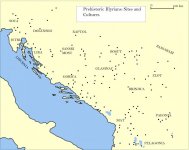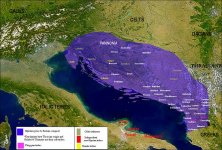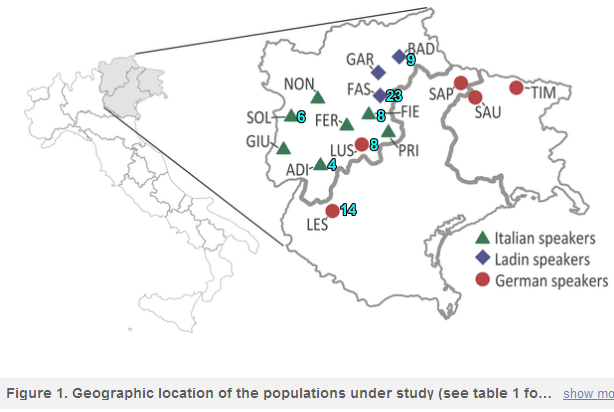Nobody1
Regular Member
- Messages
- 1,033
- Reaction score
- 261
- Points
- 0
Raeti as stated where in the alps at the same time as the venetic people where in Italy and the venetic by archeology was from at least 1050BC ........so raeti where around before the etruscans came to Italy....logic says the etruscans came from raeti or from parts north of the raeti
That all depends on who exactly the Raeti even were;
The Indo-European Veneti emerged with the Este-culture (~900BC) the Raeti are however the carriers of the Fritzens-Sanzeno-culture (~500BC) that however stems from the Laugen-Melaun-culture (~1200BC);
The Etruscan civilization is a hybrid of Pelasgian Tyrsenoi and the pre-existing Urnfield/Villanova Indo-European Umbrians;
Those Tyrsenoi (Pelasgians) are recorded by Dionysius to have sailed up into the mouth of the Po from Thessaly and since they were active in expelling the Siculi from the Apennines and the Siculi are recorded by Thucydides to have reached Sicily 300 years before the first Greek colony (Naxos ~735BC) that would mean that the Pelasgian Tyrsenoi must have arrived in the 11th cen BC i.e. older than the Fritzens-Sanzeno (Raetic) culture;
Laugen-Melaun is a non-Indo-European Bronze-age culture in the same respect as Polada and Bonnanora; The pops. prob. stemmed from pre-existing cultures most notable the Neolithic (+Copper) Remedello and Mondsee-Altheim; Hence the Neolithic G2a and E-V13 and mtDNA K1 in still substantial pressence;
Indo-Europeans emerged with Terremare and Urnfield Villanova/Golasecca/Este
Maybe the Neolithic folks and the Bronze-age Pelasgians are not that diff. and infact of the same stock; The Pelasgians who originate in the Aegean are non-Indo-Europeans and why would they than be any diff. than the pre-existing Neolithic pops of the Balkans and Anatolia; So the linguistic link between Raeti and Etruscans (which isnt 1to1 anyways) could come from their broader heritage and not a direct descendants;




